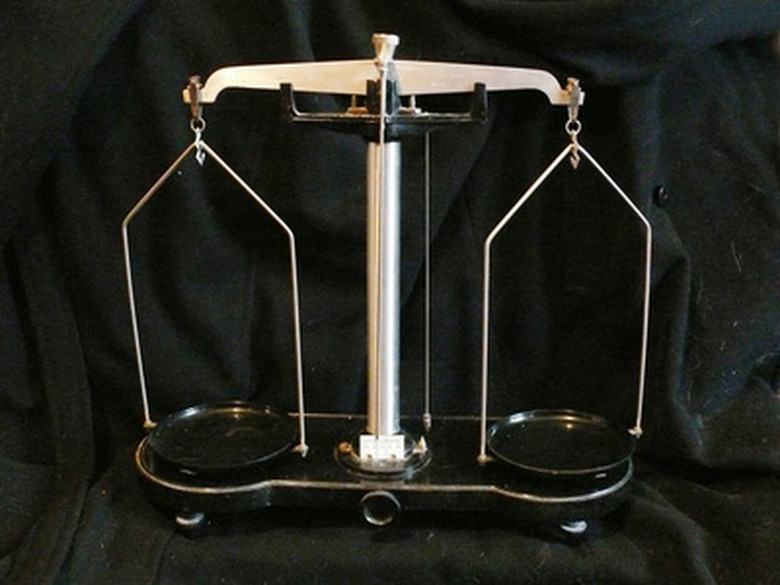How To Calculate The Density Of Plastic
The mass density of an object, more simply called density, is its mass divided by its volume. Density is usually represented by the Greek letter rho (ρ) and is calculated with the bulk density formula:
\(\rho=\frac{m}{V}\)
Here m is the mass of an object and V is its volume.
In the metric system density has units of kilograms per cubic meter (kg/m3) or grams per cubic centimeter (g/cm3). In the English system the equivalent would be pounds per cubic feet (lb/ft3).
What is Mass?
What is Mass?
Mass is the amount of matter in an object, a constant property which corresponds to the resistance of that object to acceleration. A boulder has the same mass whether it is on the ground, in space or on Jupiter. Weight is used interchangeably with mass in common language, but in fact they are very different.
Weight is the force on a mass under the influence of gravity and therefore varies with the local gravitational field. So the boulder has a certain weight sitting on the surface of the Earth, no weight floating in space and tremendously greater weight in the high gravity of Jupiter.
What is Volume?
What is Volume?
Volume is the amount of space an object occupies, which depends on the arrangement of material. A solid block of a plastic called polystyrene might have a volume of 50 cubic centimeters. If you fill the same block of polystyrene with air bubbles, it would expand and you make Styrofoam, which would have the same mass but a much larger volume, perhaps as much as 500 cubic centimeters.
Now that you know the bulk density formula and what mass and volume are, you have all you need to calculate plastic density.
Calculate Density Experimentally
Calculate Density Experimentally
1\. **Obtain a piece of the plastic.** If the composition is uniform, a small piece will have the same density as a large piece and you can use a smaller sample for easier measurement. A larger sample, however, enables more accurate measurement of both mass and volume.
2\. **Weigh the sample with a balance or scale.** Record the mass in grams. If the scale measures pounds, multiply the result by 453.6 g/lb to convert pounds to grams.
3\. **Measure the volume of the sample.** Fill a large graduated cylinder with water to the 500 ml level and immerse the sample.
Many plastics are less dense than water and will float. In this case, place a heavy weight like a metal nut in the bottom of the cylinder then add water to the 500 ml level. Remove the weight and tie it to the plastic sample with a short length of thread.
Drop them together into the water so the sample is completely submerged. The volume of the weight was included when the cylinder was calibrated with water at the 500 ml level, so the weight will not affect the measurement.
The difference between the new and original water levels is the volume of the object. Remember that one milliliter (ml) is equal to one cubic centimeter (cm3).
4\. **Calculate density with the bulk density formula.** To calculate the density of the sample, divide the measured mass by the measured volume.
Example: Calculating the Density of LDPE
Example: Calculating the Density of LDPE
If you want to measure the density of LDPE (low density polyethylene), a common plastic used in household objects, follow the described steps:
Step 1: **Obtain a piece of the plastic.** Cut a sample from an object made with LDPE.
Step 2: **Weigh the sample with a balance or scale.** Convert pounds to grams if necessary. If the sample weighs 0.15 lb, the mass in grams is 0.15 lb × 453.6 g/lb = 68.04 g.
Step 3: **Measure the volume of the sample.** If the water level rises to 574.1 ml when the plastic is immersed in the graduated cylinder, then the volume of the sample is 574.1 ml – 500 ml = 74.1 ml, or 74.1 cm3.
Step 4: **Calculate density with the bulk density formula.**
\(\rho=\frac{m}{V}=\frac{68.04}{74.1}=0.92\text{ g/cm}^3\)
Cite This Article
MLA
Lee, H.L.M.. "How To Calculate The Density Of Plastic" sciencing.com, https://www.sciencing.com/calculate-density-plastic-5974063/. 22 December 2020.
APA
Lee, H.L.M.. (2020, December 22). How To Calculate The Density Of Plastic. sciencing.com. Retrieved from https://www.sciencing.com/calculate-density-plastic-5974063/
Chicago
Lee, H.L.M.. How To Calculate The Density Of Plastic last modified March 24, 2022. https://www.sciencing.com/calculate-density-plastic-5974063/
